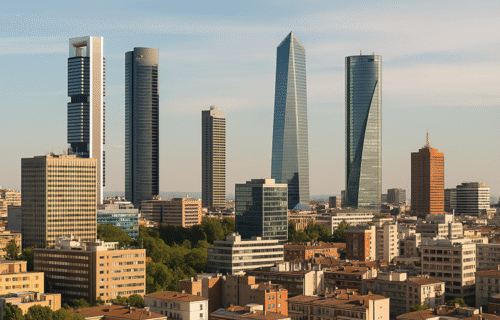Madrid’s commercial office market in 2025 is showing signs of cautious stability, driven by selective leasing activity and an increasing focus on modern, energy-efficient buildings. While the city continues to attract long-term occupiers, much of its office stock faces structural challenges that demand significant reinvestment in the years ahead.
Data compiled from leading real estate consultancies indicate that leasing activity in the Spanish capital reached roughly 290,000 square metres in the first half of 2025—about 15 percent higher than a year earlier. This growth is largely concentrated in prime, refurbished assets located in the city’s central business district and well-connected suburban corridors. According to industry analysts, companies continue to consolidate into smaller, higher-quality spaces that meet environmental and technological standards, even as overall demand remains moderate.
At the same time, vacancy rates have stayed relatively stable, averaging around 9 percent in the Madrid metropolitan area. This reflects the dual effect of strong demand for new or upgraded offices and weak absorption of older stock. Real estate research firms warn that nearly half of Madrid and Barcelona’s existing office buildings risk becoming obsolete by 2030 unless extensive modernisation takes place—an investment estimated at roughly €14.5 billion.
Official statistics from Spain’s national statistical office (INE) and the Ministry of Housing confirm a slowdown in new construction permits across the non-residential segment in the Comunidad de Madrid, highlighting the gap between new supply and market demand. However, these figures capture only construction activity and do not reflect leasing trends directly.
Despite these constraints, prime office rents in Madrid have held firm, supported by limited availability of top-grade space and ongoing interest from international occupiers. Consultancy data also suggest a continued “flight to quality,” with tenants prioritising energy performance certifications, digital infrastructure, and workplace well-being features.
The broader picture remains one of transition. Developers are increasingly repositioning outdated assets into flexible, ESG-compliant offices, while investors are watching closely for opportunities amid shifting valuations. Madrid’s office sector enters the final quarter of 2025 with a cautiously optimistic outlook—supported by stable fundamentals, but shadowed by the growing urgency to modernise an ageing portfolio that underpins one of Europe’s key real estate markets.
Source: INE
